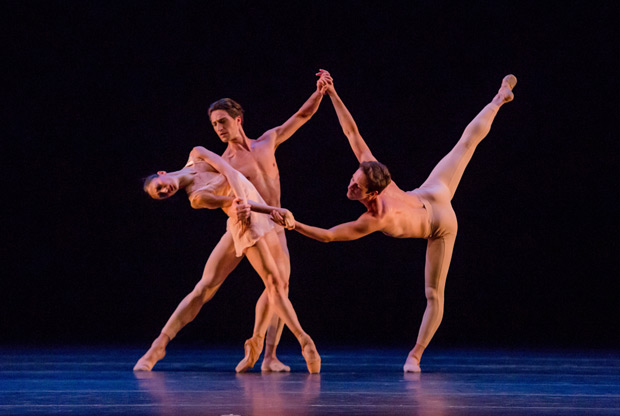
© Cheryl Mann. (Click image for larger version)
Joffrey Ballet
Body of Your Dreams, Fool’s Paradise, Bells
★★✰✰✰
New York, David H. Koch Theater
30 March 2017
joffrey.org
davidhkochtheater.com
In 1995, facing financial crisis, the Joffrey took flight to Chicago and would not return to the city of its founding for over 20 years. The Joffrey’s return to New York, presented by the Joyce Theater Foundation, is predominantly a showcase for Krzysztof Pastor’s Romeo and Juliet. The exception was the mixed bill gala on Thursday at the Koch Theater, of which Myles Thatcher’s Body of Your Dreams was the highlight.
As part of the Rolex Mentor and Protégé Arts Initiative, Thatcher was mentored by one of the world’s busiest and most acclaimed choreographers, Alexei Ratmansky. Body of Your Dreams had its world premiere in Mexico City, as part of the Rolex Arts Weekend in December 2016. Thursday night was the Joffrey Ballet’s premiere of the work.
The young Myles Thatcher’s Body of Your Dreams is named for its score, by Jacob Ter Veldhuis, AKA JacobTV. The stuttering, hyper-rhythmic piece was inspired by the Abtronic, an American weight loss product which supposedly induces abdominal contractions while one sits. All gain no pain. Chirpy American voices on cleverly edited loops proclaim the virtues of the miracle product in all its simplicity, flagrantly capitalizing on a frequent insecurity of modern man: body image. Michael Struck-Schloen of Deutschlandradio called Ter Veldhuis’ kooky piece “an artistic polyphony of consumer terror.”
Dancers’ limbs point like arrows and arabesques are yanked to the backs of their heads. Bodies scurry around striking a variety of poses and routines – the Grecian runner, the sit up, the happy (or unhappy) jogger – amidst more balletic choreography. The background is a four panelled rectangle which breaks up into sections, some of which revolve to reveal mirrors. The movement is sprightly, effervescent and occasionally humorous. A woman’s voice saying “oh!” sounds at once surprised, silly and superficially sexual. Ter Veldhuis’ pulsing beats are addictive and one craves a more consistent engagement with them from Thatcher. But maybe no groove can last for long because of Ter Veldhuis’ schizophrenic symphonia, itself a derivation of the ab machine’s stop-and-start vibrations. Something about the work’s bustling spread of dancers and inherent youthfulness has a hint of Justin Peck, but the overall structure isn’t quite as strong as what I have seen of Peck’s work. The humor too was inconsistent, its criticism of consumerism a touch too serious; more play can be had in this work. Still, on a bill with now veteran choreographers, Thatcher’s Body of Your Dreams stands out as the most dynamic work on the program. Nicole Ciapponi, formerly of San Francisco Ballet, was particularly fleet and is a fine addition for Joffrey.
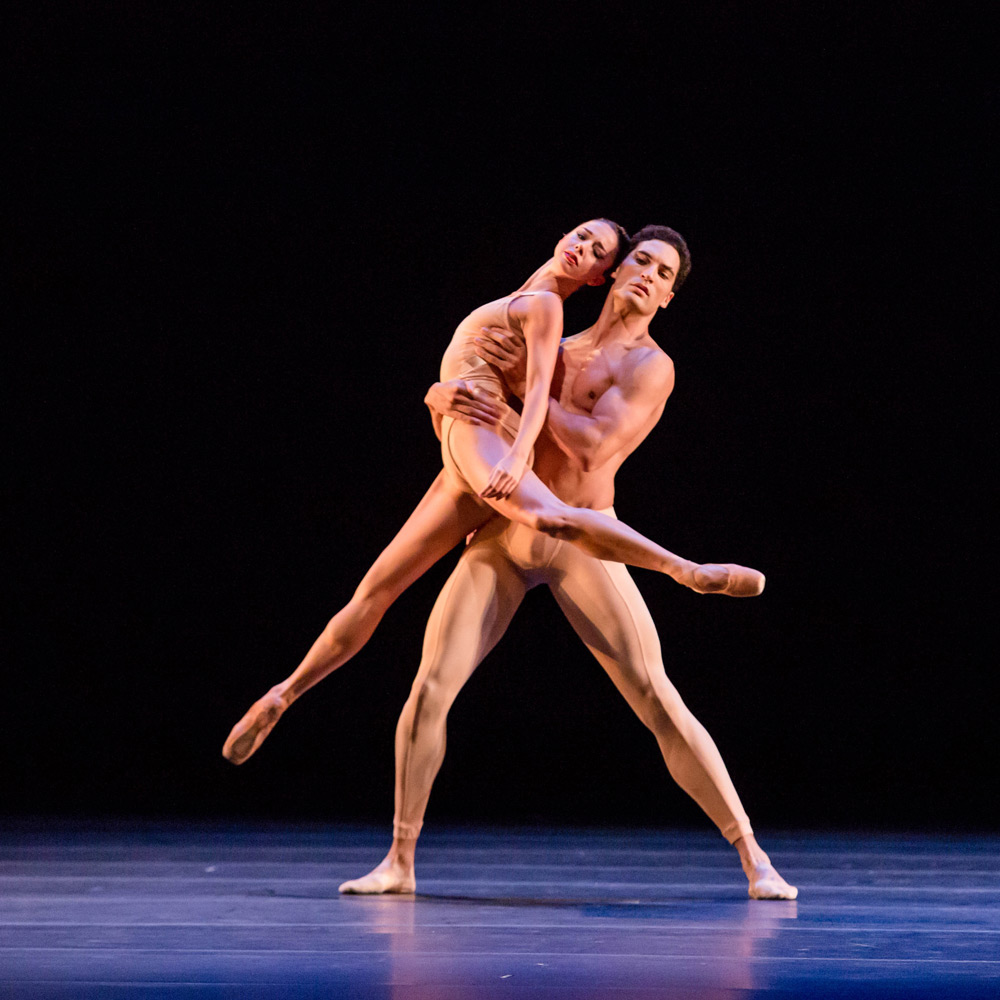
© Cheryl Mann. (Click image for larger version)
Fool’s Paradise by Christopher Wheeldon followed, a piece first performed in 2007 by his own troupe Morphoses/The Wheeldon Company. Petals fall from the rafters periodically in this dreamy, romantic suite of dances with the momentum of molasses. Set to music by Joby Talbot (which was originally a contemporary score to the 1916 film The Dying Swan), Wheeldon’s work will be pretty to most, if they like seeing women’s bodies stretched and plied, albeit usually softly, to their limits. Throughout the work men are paired together and given traditional pas de deux choreography, though this never lasts. Before long the women are dragged and draped around the stage, their toes pointed, their arms delicate, their bodies poised and posed in positions both fragile and hyper-extended. Wheeldon does use the music, but the purpose feels vain, pretty as a rococo mirror and just as vacant.
After the Wheeldon, the mind flips back to the opening work, Yuri Possokhov’s Bells, where women are more violently yanked around. Although Possokhov uses a mixture of folk and ballet movement in Bells, it is the lean, overstretched, contemporary aesthetic which dominates. One pas de deux in particular was borderline if not actually abusive in tone and physicality: a woman is subjugated repeatedly, even hits the man and is silenced by him, his hand coming between their mouths. Her autonomy is regularly compromised. It ends with her succumbing to his kiss, him on top of her, before the lights go out.

© Cheryl Mann. (Click image for larger version)
Possokhov’s best moment arrives in a dance for the men, in which a male dancer leaps in an upright position, his body a spiraling blur as he is tossed across his row of pals in a vertiginous yet horizontal move. The audience’s gasp for this little miracle was not unwarranted here.
Although Bells mixes ballet and folk vocabularies, it is the hyper-flexible, contemporary ballet aesthetic which dominates, not unlike the Wheeldon. Some vein connected Bells and Fool’s Paradise on Thursday night and it wasn’t encouraging. Both pieces overuse the female body as a vulnerable entity: arms bent and joints out, bodies hanging from a man’s arm like a broken doll, or curled up into the man’s torso, the body in the fetal position. The 21st century should be demanding more unconventional portrayals of femininity and masculinity. The Olympian athleticism of today’s dancers means men and women are near equals physically, though there will always be cravings for “pretty” choreography for women and “virile,” and perhaps “princely” movement for men.

© Cheryl Mann. (Click image for larger version)
Speaking of physicality, it is unlikely that either Bells or Fool’s Paradise could have been choreographed as they are set today, on bodies from 50 years ago. Dance has reached a new, epic level of athleticism that has never before been achieved. No matter what anybody says, a medium will change an artist’s stroke (watercolors do not look like oil paintings) and choreographers are creating dances now directly influenced by the ever advancing capacity of today’s dancers. I couldn’t help but wonder, at the end of Thursday night, how much can be masked by virtuoso technique and physicality? Ashton’s ballets look as coherent today as they did on dancers when he first created them: it can be found in the structure, composition, in musicality subliminal and overt, and sometimes in his narrative genius. A dancer without gymnastic flexibility won’t kill an Ashton ballet, other aspects – the dancer’s dynamics and phrasing for one, are more important. But how much of today’s contemporary ballet will stand the test of time, if the athleticism is taken away? Or will much of it blur in split after split, in upside down lifts, and aching backbends? Thatcher’s piece again stands out as relying more on wit and smarts than physicality alone.












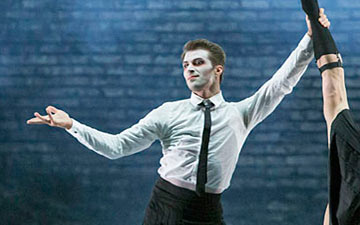
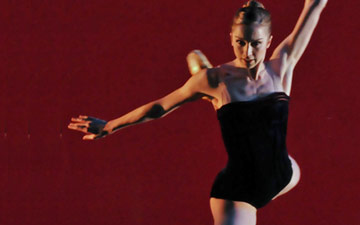

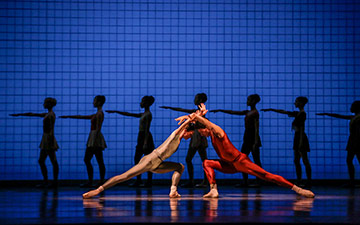

You must be logged in to post a comment.